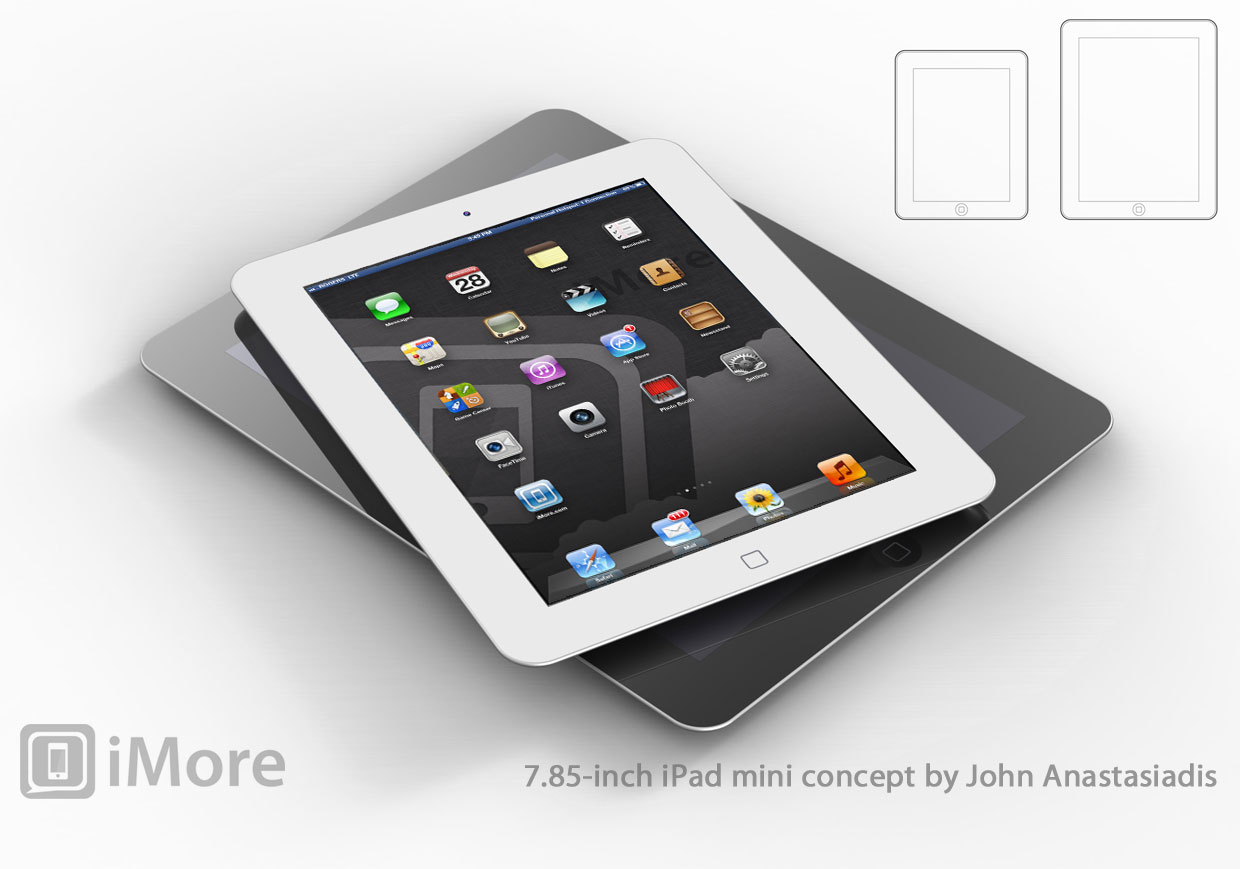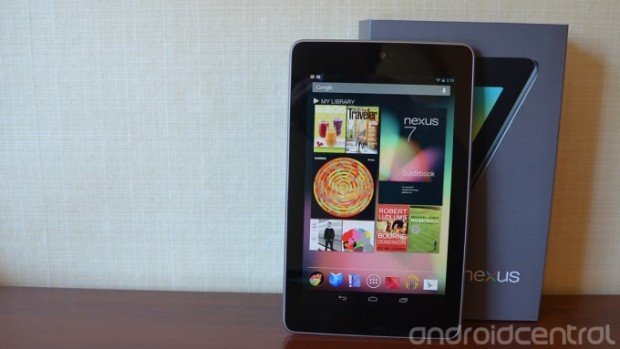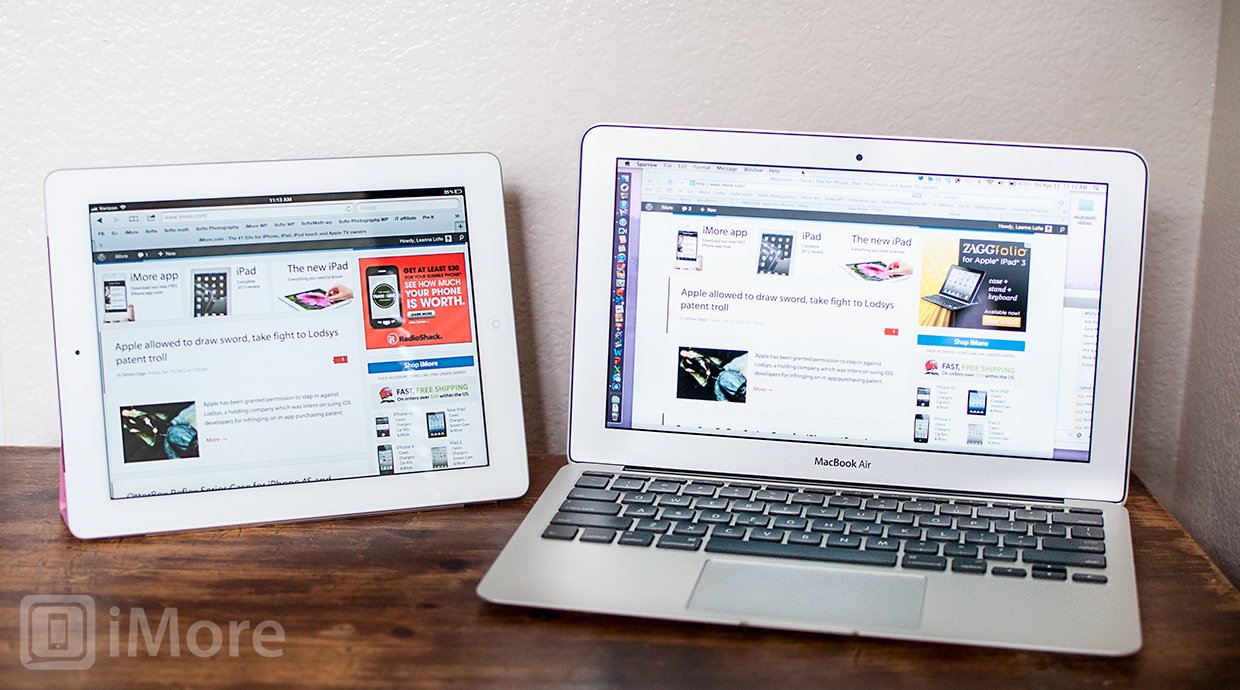Why Apple would release a 7-inch iPad

Back in May, iMore heard that Apple planned to move ahead with a 7-inch iPad this fall at a $200 price point. Stories about a smaller iPad have been around for a while, but as far as I know that was the first time such aggressive pricing got tagged onto them.
The reasons Apple was planning this, we heard, was the same reason they planned and executed on the lower price point iPod mini and iPod nano -- to take the oxygen out of the market. In this case, to leave no room for discount competitors like Amazon and Google.
Some have a hard time believing Apple would enter the low end tablet market. Apple didn't make a netbook and didn't release an iPhone nano. They thought differently and released the MacBook Air and the iPad, and kept around previous generation iPhones instead. Steve Jobs went so far as to say 7 inch tablets were DOA. So Apple couldn't, wouldn't, and shouldn't do an iPad mini, right?
Yet there's that iPod mini/iPod nano precedent, and the $999 11 inch MacBook Air which is proving incredibly hard for competitors to match in the "ultrabook" space.
I think the 7-inch iPad is one of those, and something that will seem obvious in hindsight, and for the same reasons all of Apple's successful products do -- it will serve their core business.
We've discussed this several times already on the iMore Show, and I went over it on MacBreak Weekly last week, but it bears exploring in written form.
Apple's goal is to mainstream computing. They want to sell hundreds of millions of devices that delight exactly the type of consumer usually left frustrated and alienated by technology.
Master your iPhone in minutes
iMore offers spot-on advice and guidance from our team of experts, with decades of Apple device experience to lean on. Learn more with iMore!

While neither the 7 inch BlackBerry PlayBook, nor the 7 inch Amazon Kindle Fire, nor the 7 inch Barnes & Noble Nook Tablet took the world by storm, they weren't iPads. They didn't focus on a simple, consumer-friendly interfaces, tablet-specific apps, and content that was accessible beyond U.S. borders.
They blew it. But they won't always continue to blow it.
When talking about why Apple might do a 4 inch iPhone, the reality of the market came down to this: Right now customers have to choose between an 3.5 inch iPhone and a 4+ inch not-iPhone, and while many are choosing the iPhone, many are also choosing the 4+ inch not-iPhone. By going to 4 inches, Apple probably won't lose any customers, but could gain more of those who previously chose the bigger screen, not-iPhone device.
Similarly, even considering the current iPad's incredible market lead, some customers are still choosing between it and a smaller and/or less expensive tablet.
Walk into a coffee shop or waiting room or airplane, and while you see a lot of iPads, you may just see a few eReaders too (and a once in a while one of those Fires or Nook Tablets or PlayBooks...)

Google has now announced their own, ASUS-manufactured, Android 4.1 Jellybean-powered Nexus 7 tablet as well, and at $200. They also revealed to AllThingD that, when commerce and marketing are considered, they don't intend to make much if any money off it either.
While that brutally cuts the legs out from under "partner" Android tablet manufacturers like HTC and Samsung who don't enjoy Google's advertising revenue stream and actually do have to make a profit off hardware to keep products on the shelves -- and once again shows being Google's friend can be just as dangerous as being their enemy -- it also puts a small, almost dirt-cheap not-Apple tablet on the market. One that's running the latest and greatest version of Android.
Amazon will more than likely bring a Kindle Fire 2 to market at some point as well, and they've shown a similar willingness to take a cut in hardware profits in order to make money on content. (The first Kindle Fire is more front-end for the Amazon U.S. store than it was real tablet -- so much so it's almost useless outside the U.S.)
Microsoft may have just announced current iPad and MacBook Air competitors in the Surface for Windows RT and Surface for Windows 8 Pro tablets. They've also got a deal with Barnes & Noble, however, so smaller sized, lower end tablets aren't touch to imagine.
Apple sat out the low price, low margin netbook market because they said they didn't know how to make a cheap laptop that didn't suck. They also accused competitors of going to 7 inch tablets because it was the only way they could match Apple's 9.7 inch iPad price.
Several years ago Apple was better but more expensive. With the iPad and MacBook Air, we've seen the results of Tim Cook's logistical prowess -- Apple is now better and increasingly less expensive.

If Apple can make a 9.7 inch iPad for the same price Apple's competitors can make a 7 inch tablet, how much would it cost Apple to make a 7 inch tablet?
It's hard to imagine a $200 7 inch iPad having huge margins, but it was hard to imagine a $500 9.7 inch iPad having huge margins in 2010. Now the entry-level 9.7 inch iPad 2 sells for $400.
Given Apple's economies of scale and logistical brilliance, they're likely better positioned than anyone else to to keep the bill of goods as low as possible. Given their model of ramping up prices with storage, it's also not hard to see a $300 and perhaps a $400 7 inch iPad as well, all far more profitable than the base model.
That would leave the absolute lowest cost model for those for whom price is the ultimate deciding factor, including perhaps schools and business, and higher end options for those for whom a smaller size is what matters.
Like the iPhone and current iPad, that could mean hundreds of millions of devices sold, starting with the next holiday quarter.
A Google Nexus 7 is compelling compared to the Kindle Fire and for those for whom the current iPad is simply too big. It's not nearly as compelling for mainstream users as a 7 inch iPad.
Likely, nothing is. At least not now.
A 7 inch iPad ties up the tablet market for Apple, further democratizes computing appliances for the mainstream, and gives Apple another blockbuster product.
Given all that, it's getting harder to imagine Apple not releasing it.

Rene Ritchie is one of the most respected Apple analysts in the business, reaching a combined audience of over 40 million readers a month. His YouTube channel, Vector, has over 90 thousand subscribers and 14 million views and his podcasts, including Debug, have been downloaded over 20 million times. He also regularly co-hosts MacBreak Weekly for the TWiT network and co-hosted CES Live! and Talk Mobile. Based in Montreal, Rene is a former director of product marketing, web developer, and graphic designer. He's authored several books and appeared on numerous television and radio segments to discuss Apple and the technology industry. When not working, he likes to cook, grapple, and spend time with his friends and family.
